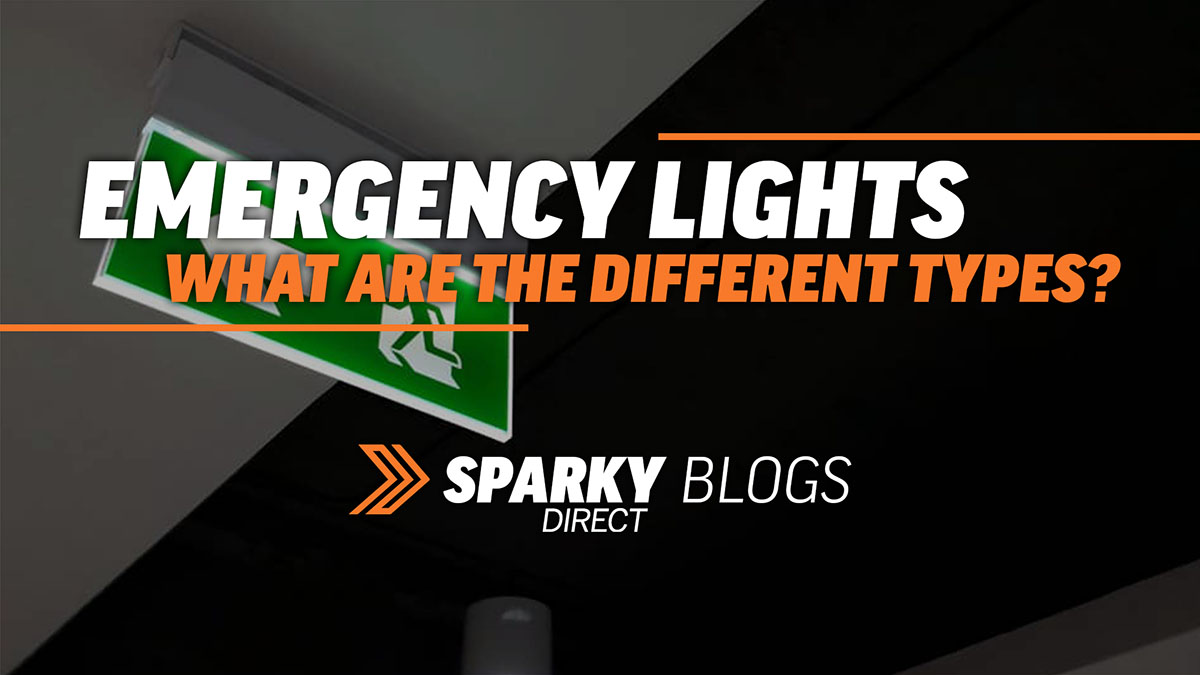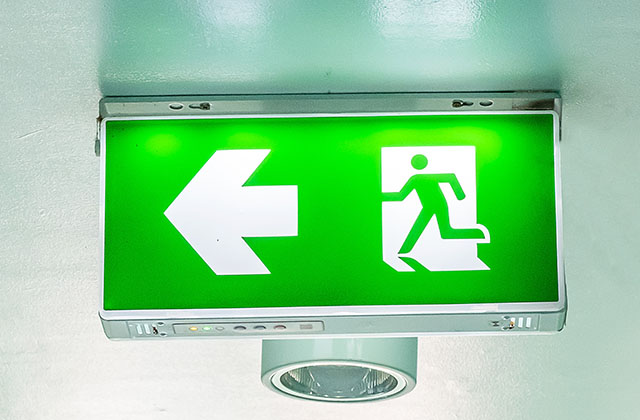Search Results:
Search Results:
Search Results:
Search Results:


When you have an emergency, it is essential to have proper lighting. So what are the different types? What light or lighting source will be required to get the job done?
psmarketresearch.com created a great list of facts about emergency lighting:
Wow, some big numbers there, as you can see the lighting market is enormous!
We have already covered What is an Emergency Exit Sign? and as you've learned, they are an integral part of any commercial lighting build.
Let's jump straight in as we look into what type of light will suit your needs.
Maintained lights are illuminated all the time (24/7) for safety. This means that they switch to a battery-powered emergency output. Even if the power fails, the light will remain on.
This safety light is most commonly an LED, and it should illuminate an exit path and should be easily seen should there be a fire to provide the occupant's safety.
An emergency lighting system in continuous use is called a maintained system. These lighting systems typically remain illuminated 24/7, and each light has dual purposes - one as a regular emergency lamp and another as an emergency light. Maintained lighting systems are often used as escape route lighting and found in buildings such as hospitals or police stations.
Non-maintained lights usually are not illuminated and will only turn on (illuminate) when the power fails. - The batteries are constantly being charged while ever there is power to the fitting. Power can be cut to a building in the event of a fire. Fire safety security alarm systems can control signs and luminaires. These fire safety systems require appropriate training, building signs and appropriate lighting.
A sustained light combines a non-maintained and a maintained light in one. This safety light is typically used in locations where it is essential to have both a standard light and emergency lighting. For example, an entryway that needs to be well lit during the day can also be used as an emergency exit in a power failure. Power failure causes the LED light to remain on by the battery supply inside the lighting fixture.
Non-maintained lights turn on only during a power failure. Maintained lights work continuously and continue to illuminate during a power failure, enabling them to function as both a standard light and an emergency light.
The lighting type depends on the area you are trying to protect or light - if the site requires a constant light because it is in a highly used part of the property or the room is not well lit. A maintained emergency light would be a better choice than a place of little traffic that is sufficiently lit. A non-maintained emergency light would be a good selection. The fitting can be in a non-illuminated state during regular operation and then turn the lighting on should there be a power failure.
No, sustained emergency lights are still available, but they are becoming less common in part because of the use of LED technology. The LED globes in the lighting fixtures last much longer and do not fail like the older tubes in the sustained fitting. Exit LED's are usually 10W and require 240v power to the battery.
There is no one answer to this question. There are various types of light. The type of emergency lighting light that is best for a specific situation will vary depending on the area that needs to be illuminated, the size and type of emergency light, and any applicable fire exit regulations. However, some general tips that may be useful when choosing types or a range of emergency lighting include considering the purpose of the light (standard or emergency), how often it will need to be used, and whether a maintained or non-maintained light is better suited for the area.
A building's exit may be blocked by fire. Luminaires, building signs and alarms can help people escape safely. New types of emergency lighting, building signs with LED lamps and different types of light illuminating on pathways and exit zones are mandatory to prevent loss of life and further damage to buildings.
%20v2.jpg)
Photo by Simone Secci on Unsplash
The primary purpose of an emergency lighting luminaires system is to provide illumination in locations where it is necessary for the safe conduct of business or during an emergency. The different types of emergency lighting systems are designed to meet the specific needs of each kind of environment.
Every class (classes) 5, 6 (six), 7, 8 or 9 building with a floor area of more than 300m² must have emergency and exit lights.
When it comes to emergency lighting, there are a few things to keep in mind. First and foremost, emergency lighting should be installed in locations where it is likely to be needed most - such as near exits or in hallways leading to different parts of the building.
Emergency lights must be installed in all common areas, escape routes and exits of multi-unit residential buildings, and government and commercial buildings occupied by employees, customers, and the general public. Installation needs to light hazards along an evacuation route such as stairs, corners and uneven paths, and firefighting equipment such as extinguishers and fire blankets.
Some other common locations that require emergency lighting are rooms with no lighting, no windows, lifts, large function rooms, different floor levels, toilets and bathrooms. Another kind of LED (bulbs) luminaire that provides safety in other premises is called a spitfire luminaire. These LED luminaires are located along exit paths and fire safety paths
Exit signs must be illuminated and be visible at all times. Exit signs must be installed above exits, at the top of staircases, balconies, and an escape path to an evacuation changes direction.
Building fire safety exit lighting requirements must be adhered to. Routine monitoring is required to satisfy the building fire safety exit lighting standards.
The following standards must be adhered to when designing an emergency lighting system.
The Australian standard for emergency lighting is AS 2293.1:2018 - Emergency escape lighting and exit signs for buildings. This building standard has three parts:
A separate power circuit is required in the building. The power must be constant and not switched.
We hope this blog sheds some light and has been insightful and helpful. At Sparky Direct, we want to educate and provide you with quality products at the best prices.
Having the right emergency light can help you get the job done quickly. Make sure to research emergency lights and choose the one that best suits your needs.
Check out our detailed blog on how to Maintain An Emergency Exit Light & Sign.
Browse Exit Sign & Emergency Exit Signs